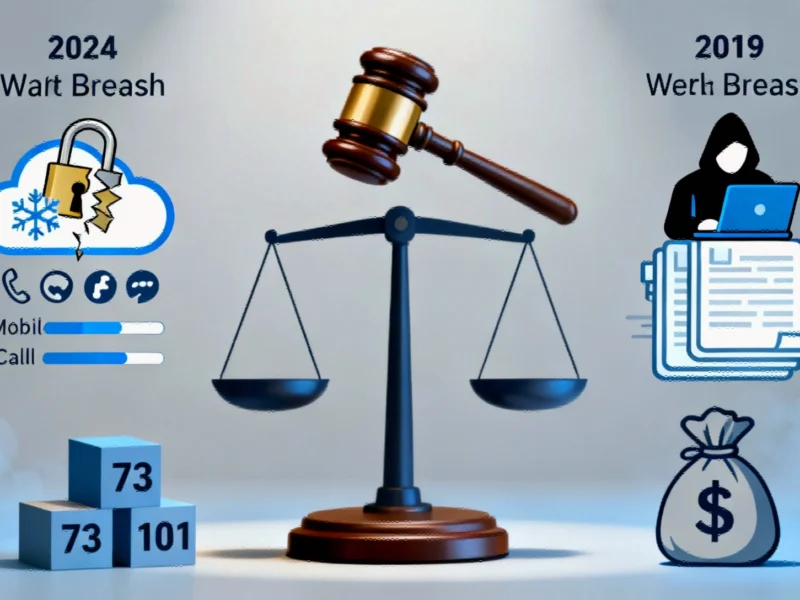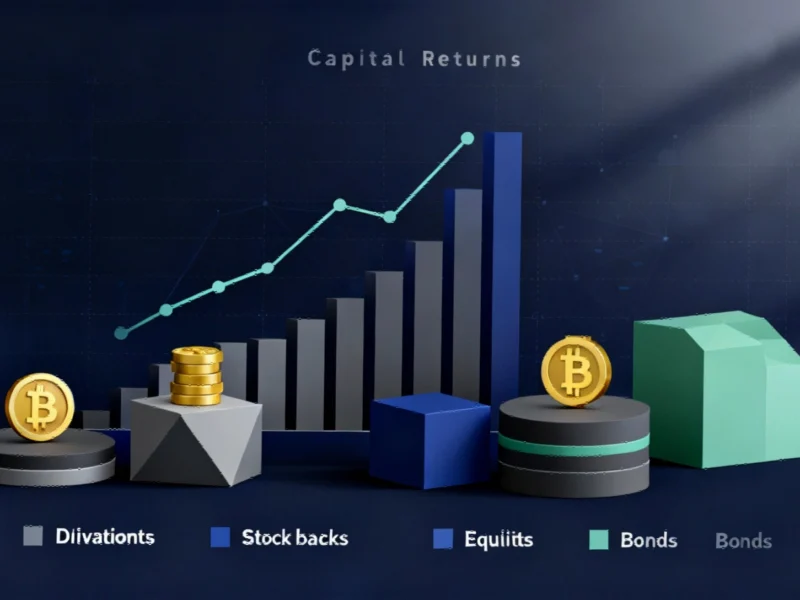Note: Featured image is for illustrative purposes only and does not represent any specific product, service, or entity mentioned in this article.
Robust Fee Income Drives Quarterly Performance
Fifth Third Bancorp demonstrated remarkable resilience in its third-quarter earnings, reporting a 14% profit increase to $608 million despite absorbing a significant $178 million loss from the Tricolor Holdings bankruptcy. The Cincinnati-based regional bank’s strategic focus on diversified revenue streams paid substantial dividends, with non-interest income climbing 10% to $781 million. This performance underscores how diversified financial institutions can withstand isolated setbacks while maintaining overall growth momentum.
The bank’s wealth and asset management divisions delivered particularly impressive results, with fee revenue surging 11% year-over-year. Meanwhile, mortgage banking operations capitalized on evolving market conditions to achieve a 16% increase in fee revenue. These gains highlight Fifth Third’s successful execution in higher-margin business segments, even as the broader banking sector faces industry developments that challenge traditional revenue models.
Tricolor Exposure and Risk Management Response
The $178 million impairment charge related to Fifth Third’s $200 million asset-backed loan to Tricolor represents one of the more significant single-exposure losses in recent regional banking history. CEO Tim Spence addressed the situation directly, emphasizing the bank’s commitment to transparency and rapid disclosure. “We decided to disclose the potential loss as quickly as possible,” Spence stated in a phone interview, noting that even after accounting for the Tricolor-related charges, the bank delivered increased profitability.
The Tricolor situation emerges against a backdrop of heightened sensitivity around credit quality within the regional banking sector. Recent market volatility has affected peers including Zions Bancorporation and Western Alliance, reflecting investor concerns about concentrated exposures. Fifth Third’s experience demonstrates how even sophisticated risk management systems can face challenges from unexpected market trends and individual corporate failures.
Strategic Positioning and Comerica Acquisition
Beyond navigating immediate challenges, Fifth Third is executing a forward-looking growth strategy highlighted by its landmark $10.9 billion all-stock agreement to acquire Comerica. This transaction, the largest U.S. bank deal this year, will create the nation’s ninth-largest lender upon expected closure in early 2026. Spence indicated that integration benefits should begin materializing in 2027, positioning the combined entity for enhanced competitive standing.
The Comerica acquisition represents a strategic bet on regional banking consolidation at a time when many institutions are reassessing their scale requirements. This move occurs alongside other related innovations in how financial services companies approach market expansion and competitive positioning.
Interest Income and Operational Efficiency
Fifth Third’s net interest income rose 7% to $1.53 billion, benefiting from disciplined deposit cost management and strategic fixed-rate asset repricing. This performance demonstrates the bank’s ability to navigate the complex interest rate environment while maintaining healthy margins. The results are particularly noteworthy given the competitive pressures on deposit rates across the banking industry.
The bank’s operational discipline extends to its technology infrastructure and digital transformation initiatives, areas where many financial institutions are making significant investments. These efforts align with broader recent technology trends affecting financial services and other sectors undergoing digital modernization.
Market Performance and Investor Perspective
Investors responded positively to Fifth Third’s results, pushing shares up 1% in early afternoon trading following the announcement. This uptick provided some relief for a stock that had declined 4.5% year-to-date through Thursday’s close. The market reaction suggests confidence in the bank’s ability to manage through the Tricolor situation while continuing to execute its strategic objectives.
The broader context for Fifth Third’s performance includes evolving regulatory frameworks and economic conditions that affect all financial institutions. These factors are part of the complex environment in which industry developments continue to reshape competitive dynamics across multiple sectors.
Future Outlook and Strategic Priorities
Looking ahead, Fifth Third appears focused on disciplined execution rather than pursuing additional transformative deals. Spence emphasized that the bank’s immediate priority is successfully integrating the Comerica acquisition, stating that Fifth Third is “not looking for another deal” while this consolidation process unfolds. This disciplined approach to market trends and strategic planning reflects a maturation in the regional banking sector’s growth strategies.
The bank’s performance this quarter, particularly its ability to absorb a significant one-time loss while still delivering profit growth, provides a compelling case study in risk management and operational resilience. As detailed in coverage of Fifth Third’s strategic positioning, the institution appears well-positioned to navigate both immediate challenges and longer-term industry transformation.
Fifth Third’s experience this quarter underscores several key themes in contemporary banking: the importance of diversified revenue streams, the inevitability of occasional credit losses even with sophisticated risk management, and the strategic imperative of scale in an increasingly competitive landscape. How the bank continues to balance these factors will be closely watched by investors and industry observers alike.
This article aggregates information from publicly available sources. All trademarks and copyrights belong to their respective owners.



